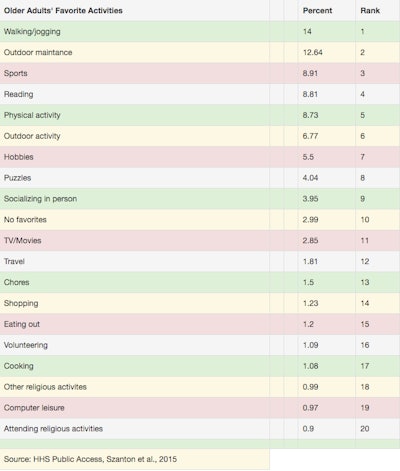 Kally Xu
Kally XuST. LOUIS –
Many restaurants operate on a first come, first served basis. Shoppers in the United States expect this; however, this orderly approach to gaining access to service lost standing in Italy. As COVID-19 spreads throughout the Italian countryside, the demand for respirators and ICUs exceeds the supply. In this case if demand exceeds supply, it increases the risk of death, especially for the elderly. Evidence from the outbreak indicates older adults experienced higher death rates from the virus. According to the Organisation for Economic Co-operation and Development, Italy’s population is the second oldest in the world behind Japan. Combined with a strong family culture where young persons engage with their grandparents and older relatives, it creates a condition ripe for the spread of the virus. The Washington Post reports that in the midst of the shortfall of intensive care capacity, the Italian Critical Care Society endorsed using age guidelines regarding access to oxygen-generating machines. Specifically, the group supported doctors that assign priority ICU access to individuals with greater life expectancy. Enter triage and young adults first—exit first come, first served. The experiences in Italy and in other countries represent important lessons learned for residents of this country and the St. Louis region.
For example, the Center for Disease Control and Prevention (CDC) COVID-19 Response Team reported that in China the vast majority of severe cases and fatalities occurred among the older populations. In contrast, people 19 years old and younger have had milder symptoms, and this age group only makes up 0.1% of deaths. This suggests that age is directly related to the severity of COVID-19’s impact on individuals in the United States and the rest of the world. Many commenters jumped to the wrong conclusion insisting that the virus did not harm young people while ignoring the potential for long-term damage to vital organs. Furthermore, too many failed to take seriously the role that children, teenagers, and young adults play in transmitting the virus to older adults. Pictures of beaches filled with young adults affirm the lack of understanding into their role as virus transmitters.
The CDC study provides insight into the United States context. Officials analyzed COVID-19 cases in the country by age group and severity in the period between February 12 and March 16, 2020, with a total of 4,266 cases reported in the United States. Of the deaths reported, 80% of the people were at least 65 years of age. Only 5% of the reported cases occurred in people between 0 and 19 years old. Additionally, 65 plus-year-old patients made up 31% of cases in the United States at the time—45% of the hospitalizations and 53% of the ICU admissions. The CDC report acknowledges the lack of data in some areas, such as information related to underlying health conditions. This limitation is important as older patients with diabetes, high blood pressure, heart problems, and other chronic illnesses have higher risk of more severe outcomes if infected with the virus.
This snapshot of the age distribution in St. Louis City provides a numerical picture of our community.

The total number of St. Louis City residents at least 65 years of age equals roughly the enrollment of 15 Marquette High Schools, 20 Mehlville High Schools, 39 Clayton High Schools, or 2.6 St. Louis Universities. None of these communities would consider it acceptable to place their students at higher risk of virus contraction.
To limit the severity of virus outcomes with this age group, we must understand their behavior. The National Health and Aging Trends study offers insight into the favorite practices of older adults.

Many of these practices do not align with social distancing. For example, some sports, socializing in person, many forms of travel, shopping in stores, dining out, volunteering, and attending religious events in person increase the risk of acquiring the virus. However, with modification or imagination, these activities can continue in different forms. Continue to golf, jog, and walk. Socialize using social media platforms. Shop online. Order carry-out. Serve as a virtual volunteer. Move religious gatherings online. Virtual strategies offer opportunities to socialize for many in our community. Others lack internet access. According to the American Community Survey, over 33,000 households in St. Louis City don’t have internet access. This represents 23% of the households in the city. Most of these households reported annual income less than $20,000. And nearly half of the households without internet access reside north of Delmar. This health crisis reveals cracks in our society.
 Dr. William F. Tate IV
Dr. William F. Tate IVSocial distancing is highly recommended for people of all ages in order to protect those who are especially vulnerable. Older adults should have at least 30 days’ worth of essential and necessary medications, avoid crowds, stop nonessential travel, end cruise excursions, and stay home whenever possible to decrease exposure potential. Long-term care facilities such as retirement and assisted-living homes should especially be cognizant and intentional in preventing the virus from spreading further among high-risk individuals. It is important that everyone, regardless of age, participates in social distancing.
Italy and China provide invaluable lessons. Italy’s overwhelmed healthcare system applied a triage strategy that prioritized its young persons. We submit that now is the time to prioritize our older adults before it is too late. Let’s help our healthcare professionals by flattening the curve. If we put others first now, it will position us to provide needed ICU treatment in a fashion that honors and supports people of all ages. And that is the American way.
Dr. William F. Tate IV is Dean and Vice Provost for Graduate Education; Edward Mallinckrodt Distinguished Professor in Arts & Sciences; and Faculty Scholar at the Institute for Public Health at Washington University in St. Louis. He will begin his tenure as provost of the University of South Carolina on July 1, 2020. You can follow him on Twitter @WFTate4.
Kally Xu is a John B. Ervin Scholar and Gephardt Institute Civic Scholar at Washington University in St. Louis. She is a candidate in the 3-2 Masters of Public Health in the George Warren Brown School of Social Work and the A.B. program in International and Area Studies and Asian American Studies.


















